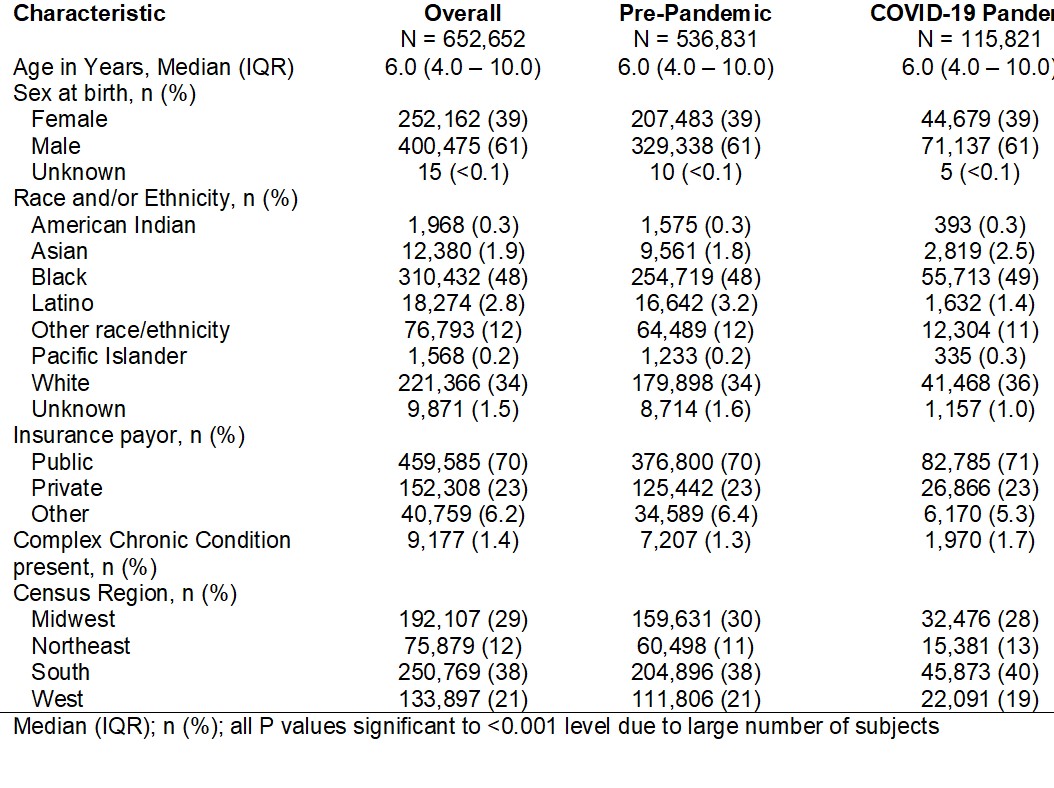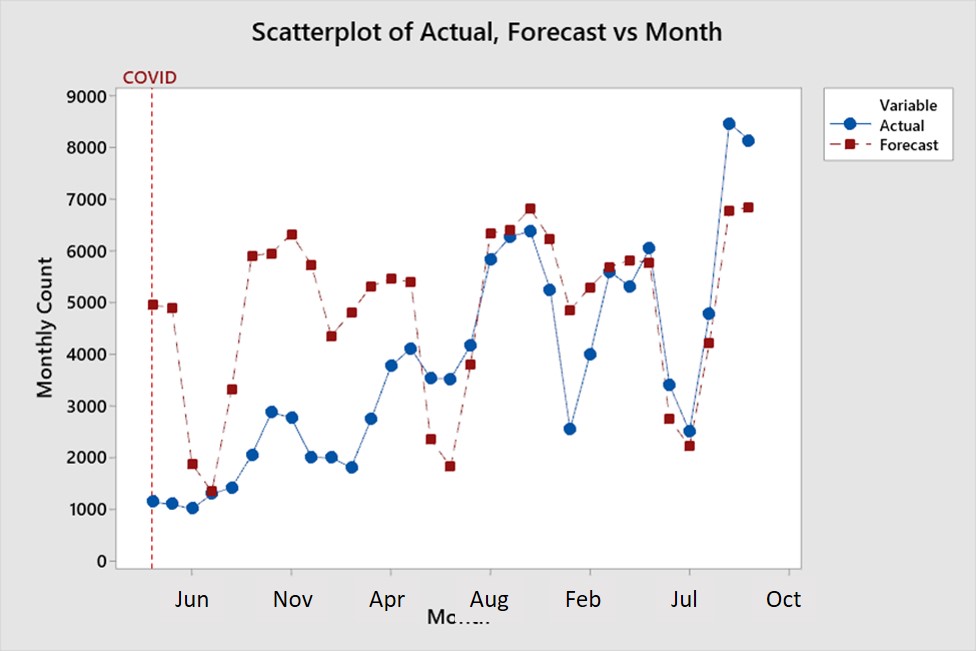Asthma
Asthma 1
365 - The Disappearance and Return of the September Asthma Peak
Publication Number: 365.302
- JH
Jessica P. Hollenbach, PhD (she/her/hers)
Connecticut Children's medical Center
Hartford, Connecticut, United States
Presenting Author(s)
Background: The return to school is a major risk factor for asthma exacerbations among school-aged children and leads to a Northern Hemisphere phenomenon called “asthma September peak.”
Objective:
Whether a similar trend would resume after schoolchildren returned to in-person school without SARS-CoV-2 mitigation measures is the issue addressed in this analysis.
Design/Methods:
This is a retrospective cross-sectional study using the Pediatric Health Information System database. Inclusion criteria were comprised of children 2 – 18 years, discharged with an APR-DRG for asthma (141.xx) from a hospital with continuous data throughout the study timeframe. We fit a seasonally-adjusted autoregressive integrated moving average model to assess temporal trends.
Results:
Between September 2012 and October 2022, 652,652 children presented to the ED for an asthma exacerbation. The median age was 6 years old (IQR 4.0-10.0) with 61% reporting male sex at birth, almost half (48%) reporting Black race, and 70% publicly-insured. When modeling actual versus predicted rates, actual asthma-related ED visits were below the predicted rates in the Spring of 2020 (~1,000 vs 5,000), whereas the actual rates were higher than the predicted rates in October 2022 (~8,000 vs 6,800).
Conclusion(s): The asthma September peak, after blunting in 2020, has returned with a vengeance, with cases in 2022 exceeding predicted rates. These data likely reflect the return of seasonal upper respiratory virus transmission in the Northern Hemisphere as SARS-CoV-2 mitigation measures have abated. 

